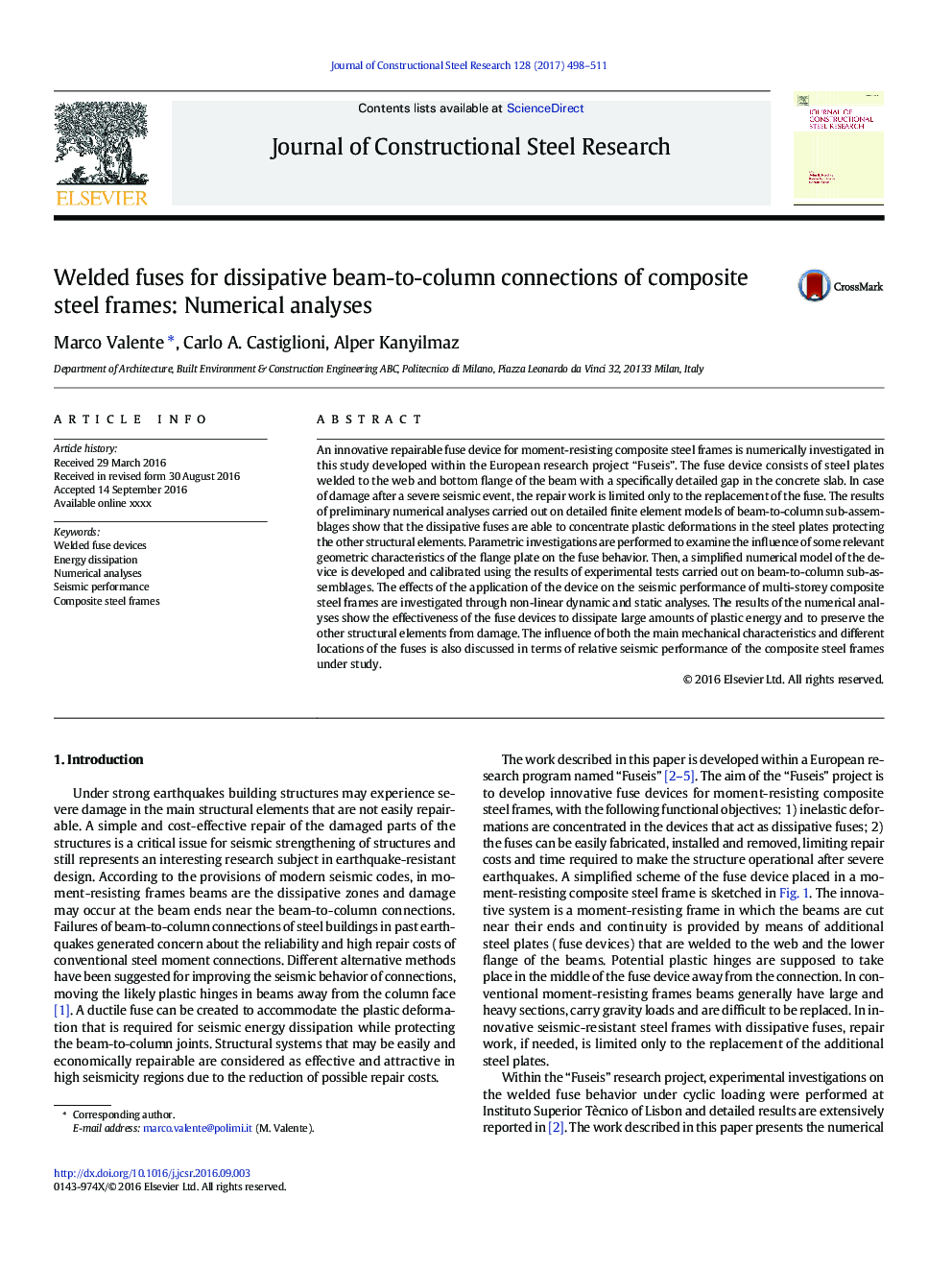| Article ID | Journal | Published Year | Pages | File Type |
|---|---|---|---|---|
| 4923610 | Journal of Constructional Steel Research | 2017 | 14 Pages |
Abstract
An innovative repairable fuse device for moment-resisting composite steel frames is numerically investigated in this study developed within the European research project “Fuseis”. The fuse device consists of steel plates welded to the web and bottom flange of the beam with a specifically detailed gap in the concrete slab. In case of damage after a severe seismic event, the repair work is limited only to the replacement of the fuse. The results of preliminary numerical analyses carried out on detailed finite element models of beam-to-column sub-assemblages show that the dissipative fuses are able to concentrate plastic deformations in the steel plates protecting the other structural elements. Parametric investigations are performed to examine the influence of some relevant geometric characteristics of the flange plate on the fuse behavior. Then, a simplified numerical model of the device is developed and calibrated using the results of experimental tests carried out on beam-to-column sub-assemblages. The effects of the application of the device on the seismic performance of multi-storey composite steel frames are investigated through non-linear dynamic and static analyses. The results of the numerical analyses show the effectiveness of the fuse devices to dissipate large amounts of plastic energy and to preserve the other structural elements from damage. The influence of both the main mechanical characteristics and different locations of the fuses is also discussed in terms of relative seismic performance of the composite steel frames under study.
Related Topics
Physical Sciences and Engineering
Engineering
Civil and Structural Engineering
Authors
Marco Valente, Carlo A. Castiglioni, Alper Kanyilmaz,
